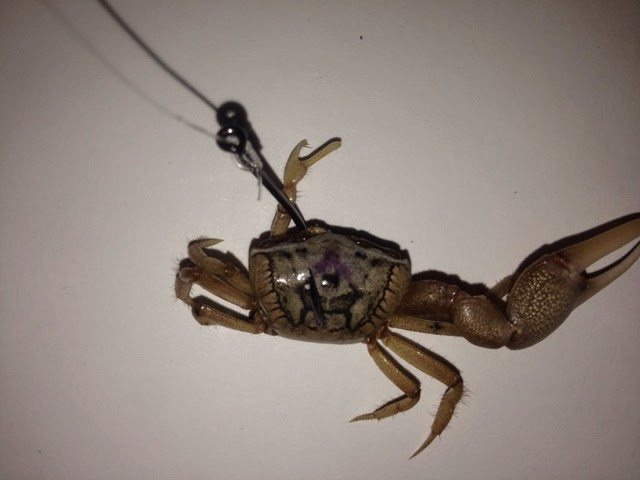The Charleston Jettys are one of my favorite ambush points for these fish. Anywhere with a bunch of barnacles and oyster deposits will hold these fish. The best depths with consistent luck inshore is usually 3-15 feet. Offshore you can find these fish anywhere from 15-70 feet on rocks and wrecks lining the bottom. You usually have to pick your days in the wintertime, the calmer the better. If the water is too rough it makes it very hard to feel such a sensitive bite. Rough water also makes it hard for the fish to see your bait.
Your rod is key for feeling such a subtle biting fish. I like to use a 7' medium fast action graphite rod. The long graphite rod provides the sensitivity necessary to feel the bite, as well as a quicker hook set. I often team the rod with a medium sized reel with spooled 20 lb braid. The drag set on your rod is key for catching these fish. I normally put 7-8 lbs of drag on my reels. This provides enough pressure to move these creatures to the surface without the chance of losing a barely hooked fish. Some of my bigger fish have only been only hooked in the lip. Keep that in mind when you are reeling a big one in. Also always bring a net.
I often find that the simpler the rig the better. A 1' 15lb fluorocarbon leader with a #1 mosquito hook is perfect for these fish. For weight all you need is a 1/4 oz split shot 6" from your hook (rig shown below). You can add more weight for higher current areas as well. The #1 mosquito hook also bends straight whenever you get snagged. Just bend it back, re-bait and you're good to go. Make sure to bring a lot of extra tackle. Prepare to get snagged a lot. I usually spend half of the time tying rigs on my charters. Its something that just happens. You also can use a bobber or popping cork with 2' of leader if you get a little frustrated from rigging so much.
Every sheepshead fisherman has a certain way to work their baits on the structure they are fishing. Always keep try to keep your rod at a 90 degree angle. Fishing right on top of your structure is necessary for a positive hookup. I prefer a soft up and down rhythm every 5-10 seconds. Just bouncing the bait up and down a foot or two off the bottom. This method is most effective when you are dealing with bigger fish that have a soft bite. You really don't feel the bite too much when using this method. You feel more of a pressure on the line and then you set the hook. This type of fishing involves fishing next to, on top of, and sometimes inside structure. These fish find refuge in cover and love highly oxygenated (moving) water.
The usual bait for sheepshead is fiddler crabs. Many other people use cut clams, oysters, ghost shrimp, cut shrimp, and even barnacles. I have found that all of these baits work but the easiest and most readily available is fiddler crabs. Hook your fiddler crab through the center of the bottom their abdomen with the hook barely exposed out of their carapace (see picture below). Make sure to buy at least double of what you think you need if you plan on fishing all day. It may seem like a lot but you can go through a pint in an hour if you really get on these fish. You never want to run out of bait.
With the right rods and bait sheepshead fishing is pretty simple. If you combine all of the techniques mentioned you should have great success landing many of these striped bait bandits. Remember, don't forget that net!!!
For more information on booking a sheepshead fishing charter please feel free to check out my website http://www.exclusivefishingcharters.com or send me an email for any other questions exclusivefishingcharters@gmail.com






Great Article it its really informative and innovative keep us posted with new updates. its was really valuable. thanks a lot.
ReplyDeleteYachts Bahamas